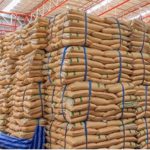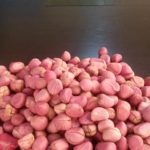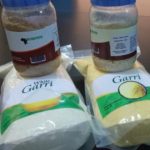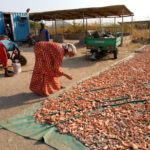Cocoa Beans
Cocoa Beans
Introduction to Cocoa Beans
Cocoa beans, also known as cacao beans, are the source of one of the most beloved and indulgent treats in the world: chocolate. These small seeds come from the Theobroma cacao tree, which is native to the tropical regions of Central and South America. Cocoa beans have a rich history and play a prominent role in culinary delights, but they are also known for their health benefits and the sustainability challenges faced in their production.
The History of Cocoa Beans
The history of cocoa beans dates back thousands of years. The ancient Mayans and Aztecs were among the first civilizations to cultivate and consume cocoa beans. They believed that the beans had divine properties and used them in various ceremonial rituals. During the 16th century, cocoa beans were introduced to Europe after the Spanish conquistadors discovered them during their conquests in the Americas. Over time, the popularity of cocoa beans and their derived products spread across the globe.
Cocoa Bean Varieties
There are several varieties of cocoa beans, each with its own unique characteristics. The most common types include Criollo, Forastero, and Trinitario. Criollo beans are considered to be of the highest quality with a delicate flavor profile. Forastero beans are more robust and make up the majority of the world’s cocoa production. Trinitario beans are a hybrid of Criollo and Forastero, creating a bean with a good balance of taste and productivity.
Cocoa Beans: Cultivation and Harvesting
The cultivation of cocoa beans requires specific growing conditions. These trees thrive in tropical climates, where they need plenty of rainfall and shade. The process begins by planting cocoa tree seeds in nurseries, which are then transplanted to larger fields once they have reached a certain size. The trees take several years to mature and start producing cocoa pods, which contain the precious cocoa beans. Harvesting involves carefully cutting the ripe pods from the trees and extracting the beans within.
The Process of Fermentation
After harvesting, the cocoa beans go through a crucial step called fermentation. This process involves placing the beans in containers or on trays to promote microbial activity. The heat generated by the fermentation breaks down the surrounding pulp, while natural acids and enzymes within the beans develop the desirable flavors. Fermentation can last from a few days up to a week, depending on the desired outcome and local practices.
Drying and Roasting Cocoa Beans
Once the fermentation is complete, the cocoa beans are spread out to dry. Drying can take place either under the sun or using specialized drying equipment. It is essential to carefully monitor the moisture level during this stage to prevent mold growth. Dried cocoa beans are then roasted to enhance their flavors. The roasting process also helps to remove any remaining moisture and gives the beans their characteristic deep brown color.
Processing Cocoa Beans into Chocolate
To transform cocoa beans into chocolate, several steps are involved. First, the roasted cocoa beans are ground into a paste called cocoa liquor. This liquor can be further processed to separate the cocoa solids from the cocoa butter. The cocoa solids are finely ground into cocoa powder, which is used in baking and various chocolate products. The cocoa butter, on the other hand, is an important ingredient in the production of chocolate bars and confections.
The Health Benefits of Cocoa Beans
Aside from being a delectable treat, cocoa beans offer numerous health benefits. They are rich in antioxidants, which help combat inflammation and oxidative stress in the body. Cocoa beans also contain minerals like iron, magnesium, and zinc, along with flavonoids that have been linked to cardiovascular health benefits. Additionally, consuming cocoa beans may enhance mood and improve brain function due to their content of stimulant substances such as theobromine and caffeine.
Cocoa Beans in Culinary Delights
Cocoa beans are not only used to make chocolate but are also featured in various culinary creations. Chefs and home cooks alike use cocoa powder or grated chocolate to add depth and richness to desserts, such as cakes, cookies, and mousses. Cocoa nibs, which are small pieces of crushed cocoa beans, can be sprinkled on top of ice cream or incorporated into granola for a crunchy and chocolaty texture. Moreover, hot cocoa made from cocoa powder is a comforting beverage enjoyed by many during colder months.
Sustainability and Cocoa Bean Production
While cocoa beans bring pleasure to millions worldwide, their production faces sustainability challenges. Cocoa farmers often struggle with low incomes, lack of access to resources, and environmental issues, such as deforestation and soil degradation. Efforts are being made to promote sustainable practices in cocoa farming, including fair trade initiatives, agroforestry techniques, and certifications that ensure ethical sourcing. Supporting sustainable cocoa bean production helps protect the environment, improve farmers’ livelihoods, and secure the future availability of this beloved commodity.
Conclusion
Cocoa beans have a fascinating history and a significant impact on our palates, culture, and well-being. From their cultivation and harvesting to the complex processes involved in transforming them into chocolate, cocoa beans play a central role in creating a wide range of delightful treats and culinary masterpieces. However, it is crucial to consider the sustainability challenges associated with cocoa bean production and support initiatives that promote fair trade and environmentally friendly practices. By doing so, we can continue to enjoy the benefits of cocoa beans while ensuring a brighter future for both farmers and the planet.
SHIPPING DOCUMENTS
Bill of Lading
Certificate of Origin
SGS Inspection Certificate
Phytosanitary Certificate
Fumigation Certificate
Commercial Invoice
Packing List
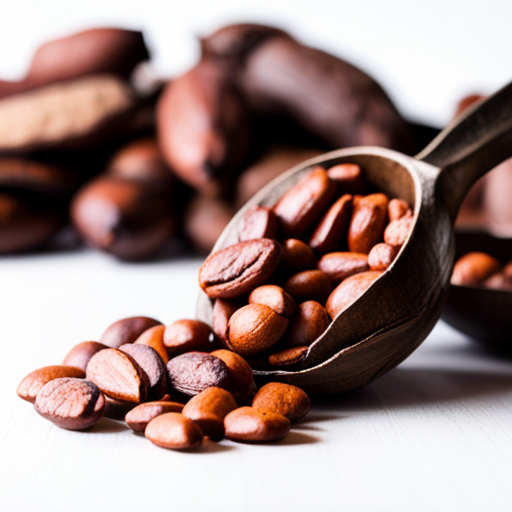
TRADE PROCESS
Cost Insurance and Freight (CIF):The seller handles everything from loading the vessel, paying for insurance, and shipping the product to the country the buyer wants it delivered.
Freight On Board (FOB):The seller is responsible for handling the transportation of the goods to the port of shipment and loading cost. Once the goods are loaded on the ship, all liabilities transferred to the buyer. Liabilities like unloading, insurance, marine freight transport and transporting products to its destination.
We Are Ready To Handle Your Request
Enter your details and we will get in touch to discuss your project


